9 Ways to Eat More Kale—and Enjoy It
Here's how to fall in love with this healthy, leafy green vegetable.
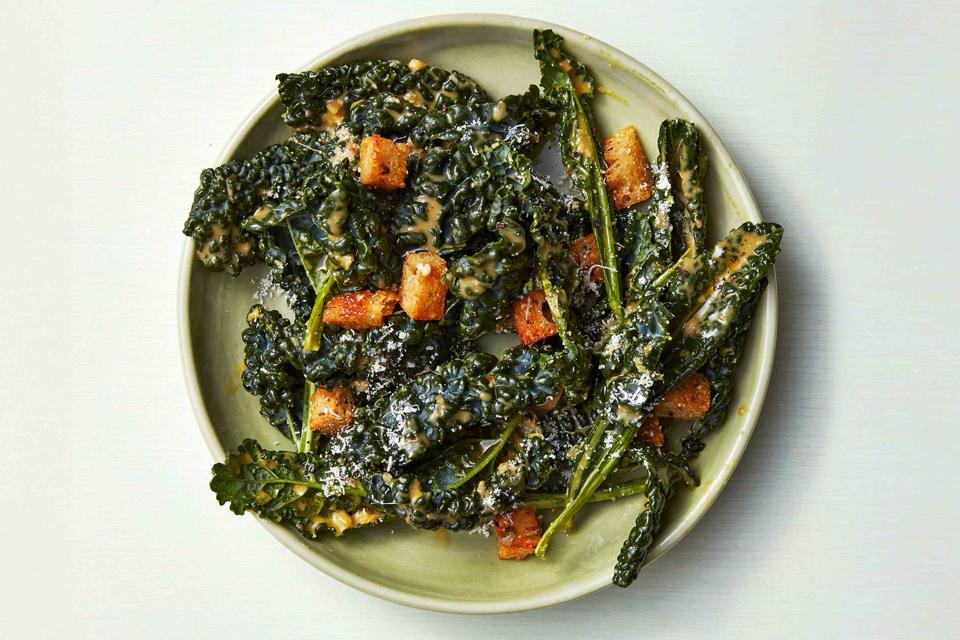
Lennartt Weibell
We have a confession—we think kale is endlessly delicious. Indigenous to the Mediterranean, kale has been around for pretty much as long as humans have consumed vegetables, but it surged in popularity in the United States in the 2010s. Once thought of as strictly a health food that required some tiring jaw gymnastics to swallow down, kale’s popularity soared thanks to a successful PR campaign and the popularization of plant-based eating, among other factors.
Now, over a decade after kale’s big re-brand, the brassica is ubiquitous in American cuisine, from home kitchens to fast casual staples to fancy restaurants. The problem: Plenty of us still just don’t like it. Packed with antioxidants, vitamins A, B6, C, K, folate, fiber, carotenoids, manganese, and more, kale is certainly nutritionally dense. It's also culinarily diverse: It can be served raw or cooked, spicy or savory, and fill in for plenty of leafy greens in endless recipes spanning global cuisines.
Whether you’re new to the vegetable or just want to renew your love for it, here are our tips for bringing out the best in kale.
Related: 10 Easy Ways to Eat Healthy Now
Choose the Right Kale
First things first, to eat more kale, you need to be sure you're buying the right kind. Just like any produce, kale comes in several varieties, and eaters may strongly prefer one type over another. Choosing the best kale for you may certainly help make it more craveable once it hits your crisper drawer.
Curly Kale: The most standard form of kale, curly kale is found in supermarkets and chopped kale Caesar salads across America. It is typically bright green, and it can be tough to chew—maybe that's what gives kale its bad reputation?
Lacinato Kale: Also called Tuscan kale or dinosaur kale, this kale is darker in color, bumpy, and flat—and can be wilted into any cooked dish, eaten in salads or smoothies, or used any way curly kale is.
Red Russian Kale: This one is a specialty kale that looks more like a cabbage (it’s part of the same family). Leaves and stems can be tough, but when treated right, it’s so worth it.
Massage It
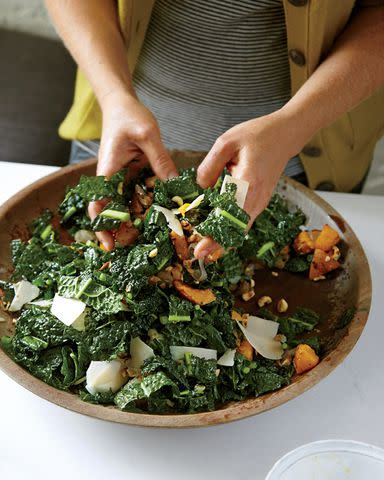
Don't skip massaging kale when making a kale salad. Pampering kale leaves a bit will make them more tender, easier to eat and digest, and infuse them with flavor. To do so, wash and cut your kale. Pat dry (or give it a round in a salad spinner). Then, add to a large bowl, sprinkle with salt, spritz on some lemon juice, and drizzle with olive oil. Toss and rub the dressing into the kale with your hands for a few minutes, and allow it to rest for at least 20 minutes. Now, the kale is much softer for a salad or any preparation.
Cook With Kale
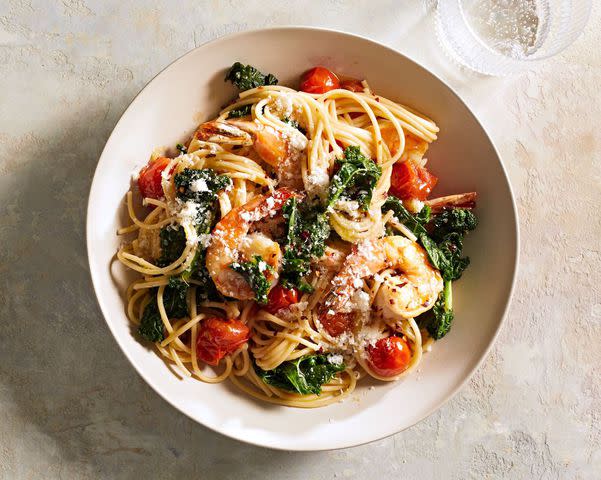
Chris Simpson
If you're avoiding kale, there’s no way you’re going to just crave the bunch sitting in your fridge—or want to cook a dish that's just a bunch of kale. It's time to find your favorite recipes that use kale as a supporting player. Look for ways that kale fits into foods and recipes you already love, whether that's pasta, creamy dips, soups, or entrees.
Spaghetti With Shrimp, Kale and Burst Tomatoes is a great way to add some greens to a tasty pasta dish
Roasted Salmon With Kale and Cabbage is an easy sheet pan meal
Sausage and Kale Soup wilts the leaves into slurpable pieces
Kale Dip, using kale instead of spinach as a creamy base for chips.
Bake Kale
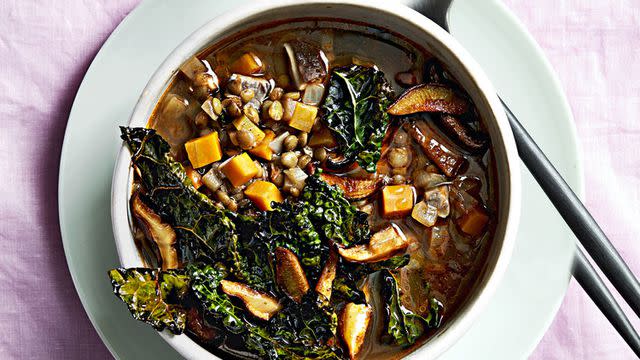
Do you remember kale chips? They were big a few years ago and are worth revisiting—or trying if you haven't before. They're big on crispy texture. Enjoy them as a snack or add them to soup or stew for a crunchy, nutritious contrast.
Opt for Baby Kale
For less of a jaw workout, or just a more delicate vegetable similar to spinach rather than cabbage, buy baby kale. Sourced from a young kale plant, baby kale is tender, earthy, and great in salads, as a garnish, or a very quick-cooking vegetable. Look for brands like Olivia’s Organic, Nature’s Promise, Organic Girl and Earthbound Organic sold by the plastic clamshell in the produce section.
Blend It

When in doubt, blend. Whether your kale is wilting or just taunting you from the produce drawer, take control of your crisper and break out the blender (or food processor). Kale is a great addition to smoothies. Just cut off the stems and blanch the leaves quickly to soften them and you have a great, vitamin-packed fiber booster ready to add to a variety of blended creations.
Make Sauce
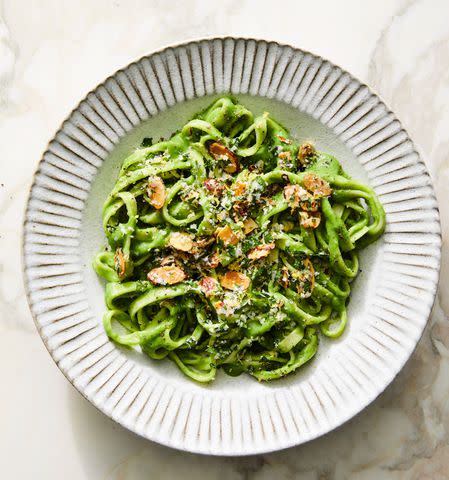
Blending kale into your favorite smoothie isn't the only way to transform kale. Use the same technique to add the healthy green to soups, sauces, and pestos. You can make it as front and center or supporting as you like. Try our easy kale and white bean sauce over pasta as a starting point.
Seek Out the Best
For the most delicious and edible kale, treat yourself to the best varieties. While pre-packaged, supermarket kale is an easy commodity to come by, kale found at farmers' markets or specialty shops is typically more flavorful and distinct in taste (sweeter! Brighter! More verdant!) than mass-produced options. You will want to eat more, we promise.
Store It Properly
If you let your kale wilt in the fridge, it is not going to taste as good—if you want to love (and eat!) kale more, you need to make sure you're keeping it fresh. Kale should always be stored in the crisper drawer. Wrap the bunch in a damp paper dowel and then seal it in a bag or container to keep the kale crisp and moist. Kale that’s gone limp can often be revived by soaking it in an ice bath for about an hour. Limp kale can also be cooked or blended to enjoy the flavor and nutrients without needing the crispness.
Read the original article on Martha Stewart.

